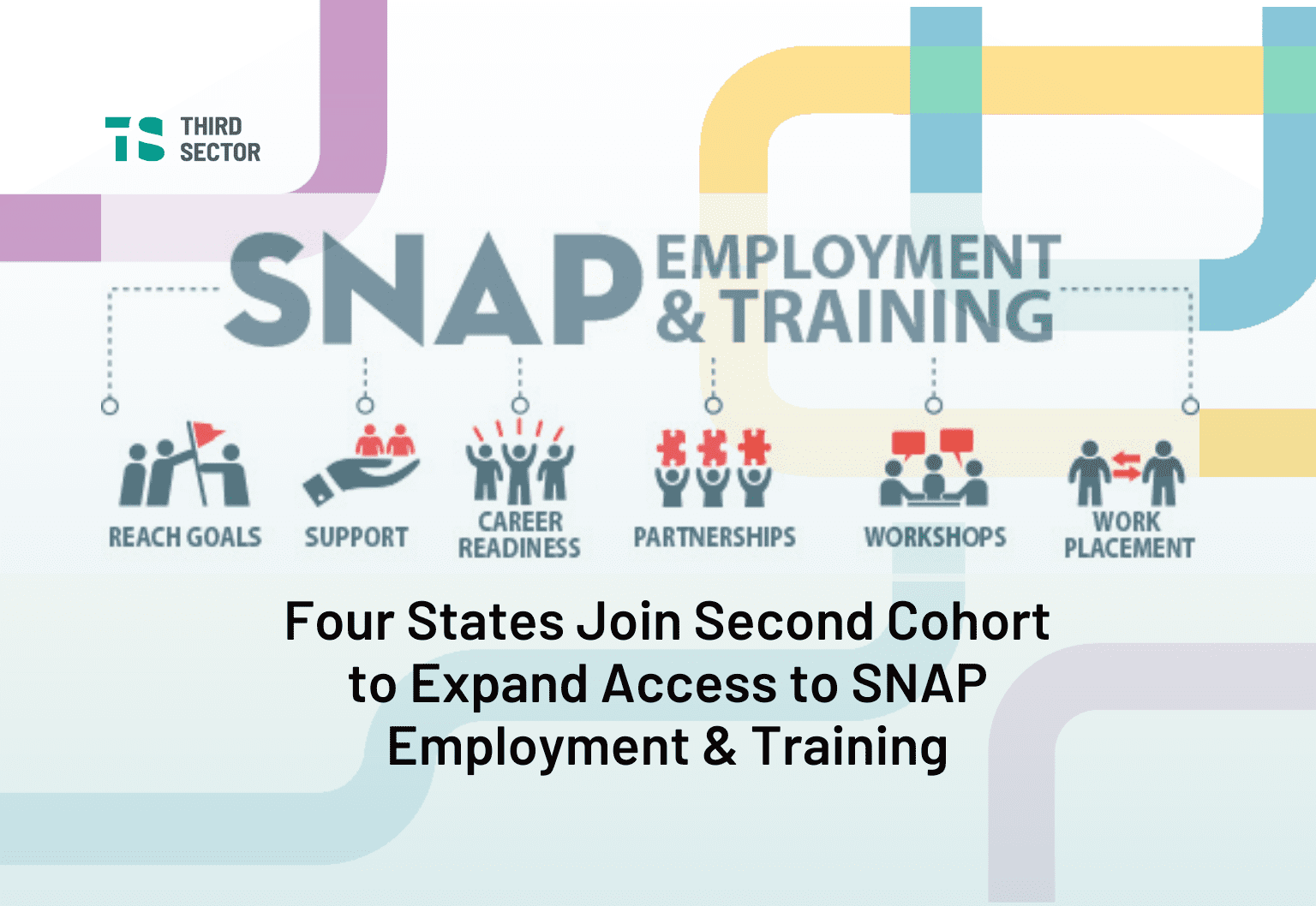Reimagining SNAP E&T: Lessons Learned from Third Sector and NGA Building Bridges Across the Workforce EcosystemApply to the 2025-2026 Policy Academy Cohort by June 6
Across the country, SNAP Employment & Training (E&T) and other workforce development programs often operate in silos. Each aims to support economic mobility but does so through disconnected strategies, funding streams, and eligibility requirements. This fragmentation makes it harder for job seekers, especially those relying on SNAP, to access coordinated, high-quality services that lead to lasting employment.
To address this challenge head-on, the National Governors Association Center for Best Practices (NGA Center), in collaboration with Third Sector, created the Policy Academy to Strengthen SNAP E&T Delivery. Designed as a structured, multi-state initiative, the Policy Academy helps states build stronger bridges across agencies, align policy and program efforts, and reimagine how SNAP E&T can be integrated into a broader workforce ecosystem. With technical assistance from the NGA Center, Third Sector, and Seattle Jobs Initiative, four states—Indiana, Minnesota, North Carolina, and Idaho— participated in the first cohort to take up this challenge, emerging with concrete progress, shared learning, and a roadmap for change. The following are wins that we supported and a challenge that arose that other states should consider as they reimagine SNAP E&T to work in tandem with the broader workforce ecosystem.
1. Collaborating Across Silos: A New Way Forward
At the heart of the Academy’s approach is a belief that strong partnerships drive strong programs. For many teams, this meant re-establishing or deepening collaboration between human services and workforce agencies.
- Indiana, for example, built a more stable and ongoing relationship between its Division of Family Resources and Department of Workforce Development, agencies that had operated largely in parallel. By prioritizing regular communication and clarifying shared goals, the team laid a stronger foundation for integrated service delivery going forward. In Minnesota, the Department of Employment and Economic Development (DEED) and the Department of Children, Youth, and Families (DCYF) expanded their connection to one another to include broader staff engagement and alignment with state strategic priorities, including the “One Minnesota” plan. The result was a more unified effort across agencies to focus on increasing participation, improving messaging, and better integrating services for Minnesotans.
2. Shifting Systems and Expanding Reach
With the Academy’s structured support and peer learning, the four states moved from ideas to action.
- North Carolina expanded its SNAP E&T program under the name More Than A Job NC, launching a new visual identity, multilingual outreach materials, and a promotional campaign to increase awareness among job seekers. The state also doubled its county coverage, growing the program’s footprint from 29 to 58 counties. Minnesota made strides in postsecondary access, bringing on a Higher Education Specialist to lead efforts around SNAP eligibility for college students and laying the groundwork for policy alignment with federal student rules. Meanwhile, Indiana began evaluating potential third-party partners to strengthen its provider network and expand service options. Idaho, with a focus on improving the participant experience, created a detailed customer journey map and conducted interviews with front-line staff to identify system gaps and duplications. This work is already informing intake redesign efforts and better alignment between the Department of Labor and the Department of Health and Welfare.
3. Facing Challenges, Finding Momentum
From leadership turnover that disrupts early momentum to wrestling with when to engage the right partners at the right time, each state faced real and familiar challenges around the inherent complexity of cross-agency coordination. One state team discovered that without a formal data-sharing process, One-Stop partners couldn’t easily identify SNAP participants, a challenge that prompted immediate action to develop a new agreement. Each of these experiences reinforced a key lesson: while systems change is never simple, it becomes possible when teams have the right structure, support, and shared commitment to push through barriers.
What sets the Policy Academy apart for participating states is its balance of structure and flexibility. The model provides dedicated time for planning, coaching, and collaboration, alongside technical assistance and resources tailored to each state's needs.
Teams cited the Policy Academy's role in helping them stay focused on long-term goals, navigate operational complexities, and stay connected to a national learning community. From brainstorming new initiatives to mapping out cross-agency strategies, the Policy Academy offered both the practical tools and strategic space needed to drive real progress.

